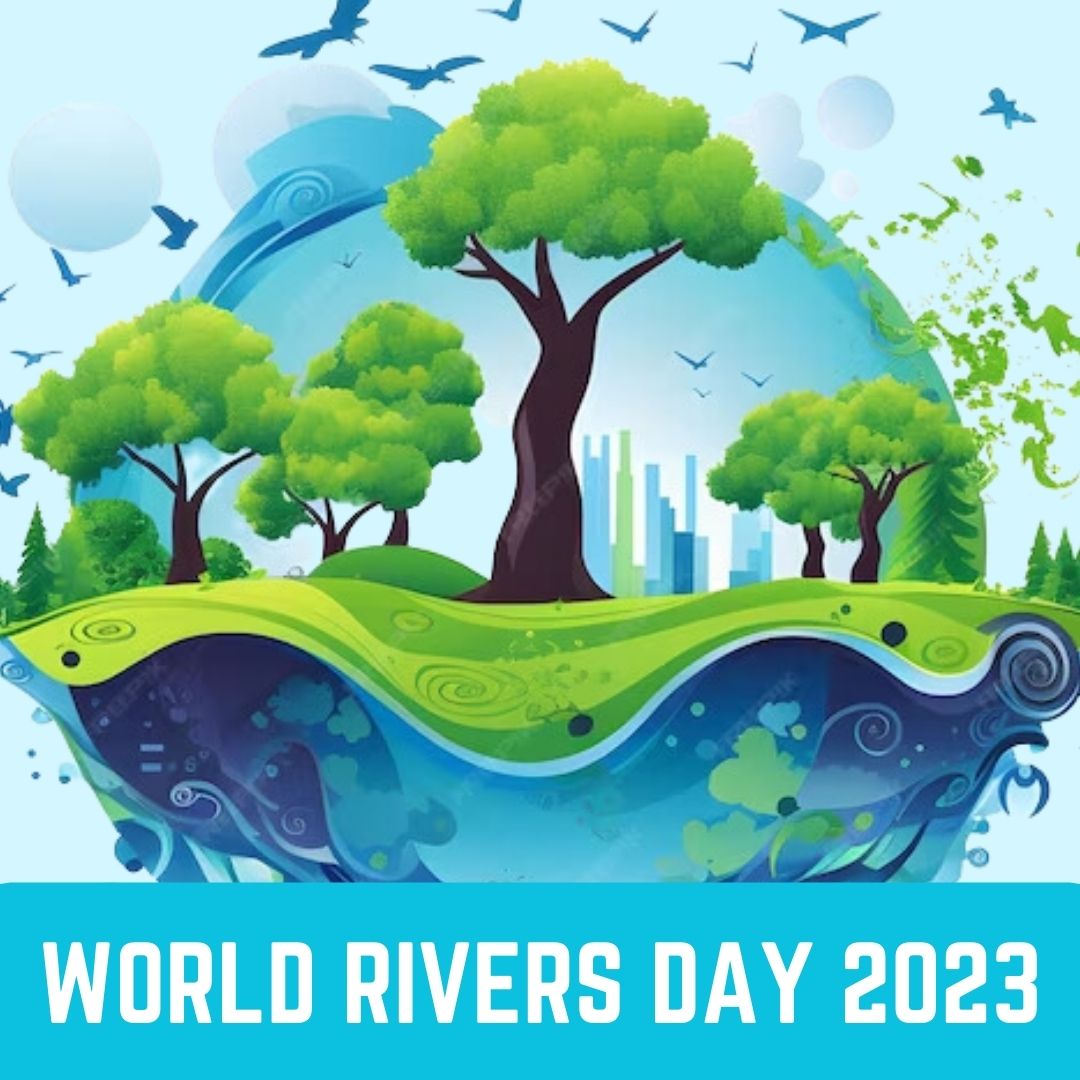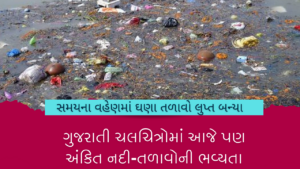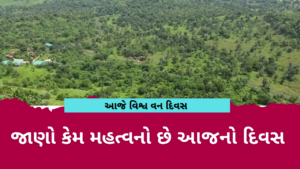There exists a day that celebrates the importance of Rivers in the world. Yes, celebrated on the fourth Sunday of September, World Rivers Day is celebrated to highlight the importance, significance and values of rovers across the world. Furthermore, to raise public awareness regarding rivers, on this day, global events are held that also promote the conservation and management of certain vital resources that are necessary for global sustenance, one of them being rivers.
World Rivers Day was first observed in 2005 after the launch of the United Nations initiative ‘Water for Life Decade’. A Canadian River Advocate, Mark Angelo, first proposed the idea of a day entirely dedicated to the celebration of rivers. Hence, World Rivers Day is also referred to as BC Rivers Day as the founder of this day belongs to the Canadian province of British Columbia (BC), and this day serves as a major appreciation event in the nation.
What is rather unique is that 24th September is not the fixed date for the celebration of this day, as this Canadian event takes place on the fourth Sunday of September, every year, which led to its global counterpart to be celebrated in the same manner.
Rivers serve as one of the few essential and vital resources that are needed for the sustenance of creatures on this planet. Rivers, therefore play a rather critical role, in fact, multiple roles, that include:
- the key to sustain life on Earth
- Bone of contention between countries
- Essential for ecosystems, especially for aquatic wildlife
- Revered by devotees in certain religions (such as Hinduism)
- Waterways help enhance trading routes, thereby helping strengthen international alliances and global trade.
Recognized globally as a major celebration-cum-event, several International as well as local or state-based organizations often make use of this day to disseminate information and awareness on the importance of rivers, the role they play in the provision of clean drinking water, helping sustain human life as well as helping preserve the biodiversity. With the importance of rivers increasing, there are clean up drives organized by environmental groups that band together to clean up river banks where they remove debris and other non-recyclable trash from and around river bodies.
Furthermore, as part of this day’s celebration, fests, workshops and others are organized to spread information, knowledge and enable learning experiences regarding the importance of rivers as well as around the importance of safeguarding rivers while we are at it.
Rivers hold various meanings and hint at various emotions for different cultures and groups. For instance, water serves as a major source of energy, life, sustenance and serves as an important element in religions and ethnic cultures. Rivers have played a significant role in history and mythology, with temples, lost laces and several other elements associated with the same. From the multiple rivers found across the world, some are deemed sacred, for instance:
Urubamba River
A collection point of the Earth’s water that would then feed into the sky, according to Incan culture.
Jordan River
The Jordan River connects the Dead Sea with the Mediterranean, passing through Israel, Jordan, Lebanon, and Syria and is sacred in both Judaism and Christianity. Followers of both faiths can enter the murky river here, though it is heavily polluted.
Ganga River
At 1,569 miles long, the Ganges flows through India and Bangladesh and is one of seven sacred rivers in Hinduism, with millions travelling there to bathe in the river to absolve themselves of all sins. As with many of the world’s rivers, it is heavily polluted by the industrial factories, sewage systems, and urban areas it flows past in India.
Yamuna River
The Yamuna River, the longest tributary of the Ganges, stretching from far northern India, past New Delhi and the Taj Mahal in Agra. It is India’s most polluted river. And while believers continue to bathe and drink from it, the river builds up toxic foam that forms as the river passes through urban and industrial areas.
Whanganui River
New Zealand’s Whanganui River has long been sacred to the local Māori, who view it as a living, breathing ancestor.
Bagmati River
The Bagmati in Nepal is the final resting place for many Hindus, whose bodies are dipped in the water three times and cremated on funeral pyres at the Pashupatinath Temple (pictured) in Kathmandu. The ashes are then spread in the river, which meets up with tributaries of the Ganges in northeastern India.
However, something so sacred and that holds such high religious values is now in a state of deterioration as a large number of rivers are polluted today, due to industrialization.
Rivers are considered sacred in the Indian culture as it is often associated with gods, goddess and miraculous powers of healing and blessings. However, there are several reasons as to why rivers are viewed more than just mere water bodies in the Indian culture:
- Many of India’s major rivers, such as the Ganges (Ganga), Yamuna, Godavari, and Saraswati, are mentioned in ancient Hindu scriptures like the Vedas and Puranas. These texts often personify these rivers as goddesses and depict them as divine entities.
- Indian civilization has developed along the banks of its rivers. These rivers have nourished and sustained communities, making them centers of life and culture. Many of India’s great cities, historical sites, and temples are situated along these riverbanks, emphasizing their cultural significance.
- Rivers play a crucial role in India’s ecosystem as they provide water for irrigation, drinking, and industrial use. The fertile plains around these rivers are essential for agriculture, as well as the River valleys that are rich in biodiversity, supporting various plant and animal species. Preserving rivers is critical for sustaining life in India.
- Indian mythology is replete with stories and legends associated with rivers. These stories often highlight the rivers’ role in purifying and nourishing the land.
- Rivers are central to various rituals and ceremonies in India, especially associated with birth, death and marriage. For instance, Ganpati idols are immersed into the rivers during Visarjan.
- Rivers serve as a source of livelihood for those who live along its banks as fishing, agriculture and transportation are associated with rivers, thereby facilitating trade and commerce in India.
- There has been a growing need to protect and conserve rivers in India, which has led to a large environmentalist movement taking the forefront, advocating for the preservation and cleaning of these sacred water bodies.
Delving on the fact that rivers serve as a bone of contention between countries and states, often standing as a major conflict in history. These conflicts are referred to as Water Disputes.
Water disputes occur between countries, between regional organizations as well as within countries, between states. Particularly in India, Interstate water disputes occur when there is a dispute between two or more states on the use, distribution and control of rivers flowing in the said two or more states. When the concerned states cannot resolve disputes through negotiations then the Central Government constitutes a water dispute tribunal for resolving the water dispute. To settle such disputes, the Inter-State River Water Disputes (ISRWD) Act, 1956 was passed in the parliament.
Essentially, water therefore acts as a state subject and serves as a cause of dispute between states. Inter-state disputes may occur due to several reasons that include: allocation of waters between states and how they are perceived and received and understood, allocation of construction costs and benefits of a project that is being jointly carried out between states, excess withdrawal by a state and many other reasons.
India is therefore rife with inter-state water disputes, with some notable cases that include:
- The dispute between Punjab, Haryana and Rajasthan occurred over Ravi, Beas and Sutlej rivers.
- The most notably infamous Cauvery water dispute that involved the states of Tamil Nadu and Karnataka primarily, with Kerala and UT Pondicherry in the mix.
- Periyar dispute between Kerala and Tamil Nadu
- The dispute between MP, Gujarat, Maharashtra and Rajasthan over the Narmada River
- And finally the dispute involving Maharashtra, Karnataka, Andhra Pradesh, MP and Odisha over Krishna-Godavari.
The ongoing infamous Cauvery Water Dispute remains fresh as till date, locals in both Karnataka and Tamil Nadu fight for their rights over the contested yet sacred water body. Here’s a bit on the ongoing Dispute:
- Cauvery, an interstate basin with its origin in Karnataka and flowing through Tamil Nadu and Pondicherry, the states of Tamil Nadu and Karnataka have been embroiled in a dispute over the sharing of Cauvery.
- The dispute first took shape in the 19th century between Mysore State ad Madras Presidency, and in January 2018, the Supreme Court accepted Karnataka’s contention that Bengaluru needs water infrastructure, following which the SC ordered Karnataka to release 177,25 thousand million cubic feet instead of 192 thousand million cubic feet of water to Tamil Nadu at the inter-state contact point at Biligundlu.
- Since then, it has only gone downhill as this 150 year old dispute has now also been affected by climate change, political rift and a multitude of other regions.
- Currently, protests have begun in Karnataka’s Mandya district over the Cauvery dispute with Tamil Nadu as the SC refused to interfere in the enforcement of water sharing agreements between these states.
- The Cauvery Water Regulation Committee on Tuesday recommended Karnataka to release 3,000 cusecs of water to Tamil Nadu starting September 28.
- In the state of Karnataka, a massive protest occurred in Bengaluru’s Freedom Park, that halted everyday activities, with the Bengaluru Bandh in place, organized by Kannada farmers and other organizations, backed by political parties such as BJP and JD(S), in opposition to releasing Cauvery water.

- At the moment, the scenes are completely different in Tamil Nadu as a group of farmers from Tiruchirapalli are seen holding dead rats in their mouths, in protest against the Karnataka government and in their demand to release Cauvery waters from Karnataka.
Rivers hold different meanings for different people, for some it may serve as a bone of contention, for others it is a blessing but all in all, the message that all clearly try to put out is that it a source of sustaining life on Earth and with the advent of Global Warming and the Climate Change crisis that Greta Thunberg is so religious advocating for, we must put in collective efforts at saving rivers across the world.













